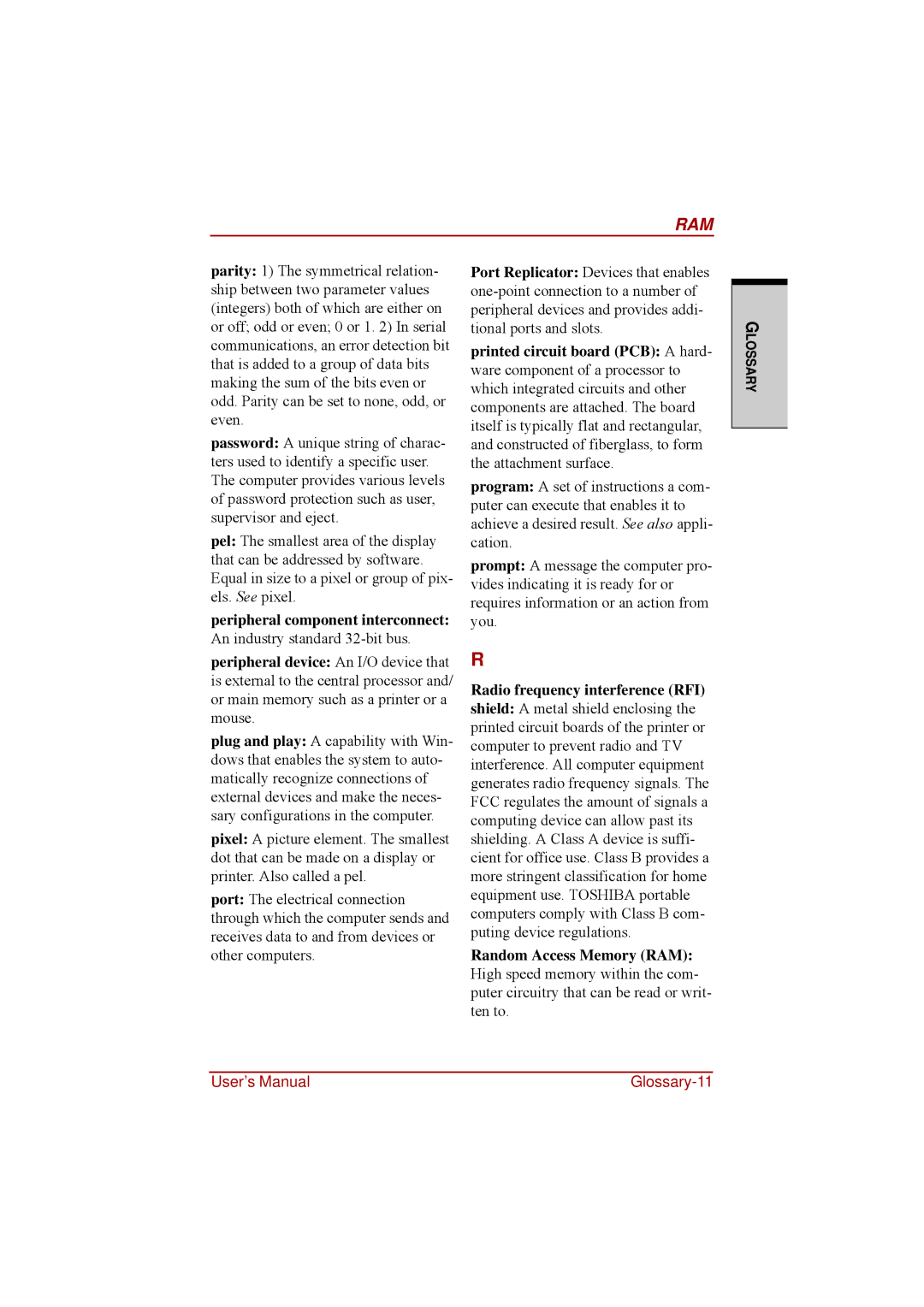
RAM
parity: 1) The symmetrical relation- ship between two parameter values (integers) both of which are either on or off; odd or even; 0 or 1. 2) In serial communications, an error detection bit that is added to a group of data bits making the sum of the bits even or odd. Parity can be set to none, odd, or even.
password: A unique string of charac- ters used to identify a specific user. The computer provides various levels of password protection such as user, supervisor and eject.
pel: The smallest area of the display that can be addressed by software. Equal in size to a pixel or group of pix- els. See pixel.
peripheral component interconnect: An industry standard
peripheral device: An I/O device that is external to the central processor and/ or main memory such as a printer or a mouse.
plug and play: A capability with Win- dows that enables the system to auto- matically recognize connections of external devices and make the neces- sary configurations in the computer.
pixel: A picture element. The smallest dot that can be made on a display or printer. Also called a pel.
port: The electrical connection through which the computer sends and receives data to and from devices or other computers.
Port Replicator: Devices that enables
printed circuit board (PCB): A hard- ware component of a processor to which integrated circuits and other components are attached. The board itself is typically flat and rectangular, and constructed of fiberglass, to form the attachment surface.
program: A set of instructions a com- puter can execute that enables it to achieve a desired result. See also appli- cation.
prompt: A message the computer pro- vides indicating it is ready for or requires information or an action from you.
R
Radio frequency interference (RFI) shield: A metal shield enclosing the printed circuit boards of the printer or computer to prevent radio and TV interference. All computer equipment generates radio frequency signals. The FCC regulates the amount of signals a computing device can allow past its shielding. A Class A device is suffi- cient for office use. Class B provides a more stringent classification for home equipment use. TOSHIBA portable computers comply with Class B com- puting device regulations.
Random Access Memory (RAM): High speed memory within the com- puter circuitry that can be read or writ- ten to.
GLOSSARY
User’s Manual |
